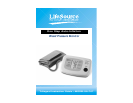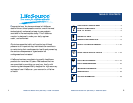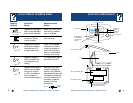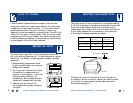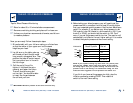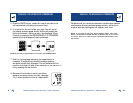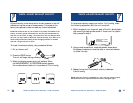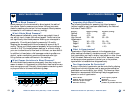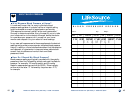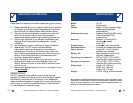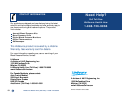
EXAMPLE
DATE AM SYS/DIA PULSE PM SYS/DIA PULSE
Name: Age: Weight:
BLOOD PRESSURE RECORD
1/14
9:30 132/98
P 69
6:30 128/87
P 63
TM
Why Measure Blood Pressure at Home?
It is now well known that, for many individuals, blood
pressure readings taken in a doctor’s office or hospital setting
might be elevated as a result of apprehension and anxiety.
This response is commonly called “white coat hypertension.”
One way to determine whether this is the case for you is to take
your home monitor to the doctor’s office and, before the doctor
or nurse takes your pressure, do it yourself on your home
monitor and compare it to your record of home readings.
In any case, self-measurement at home supplements the doctor’s
readings and provides a more accurate, complete blood pressure
history. In addition, clinical studies have shown that the detection
and treatment of hypertension is improved when patients both
consult their physicians and monitor their own blood
pressure at home.
How Do I Record My Blood Pressure?
Blood pressure readings are typically recorded with the systolic
pressure written first, followed by a slash mark and the diastolic
pressure. For example, 120 mmHg systolic and 80 mmHg
diastolic measurements are written as 120/80. Pulse is simply
written with the letter “P” followed by the pulse rate—P 72,
for example.
ABOUT BLOOD PRESSURE
❤
15 16
❤
❤
LifeSource Health Line (Toll-Free): 1-888-726-9966LifeSource Health Line (Toll-Free): 1-888-726-9966



